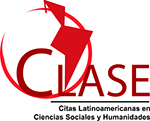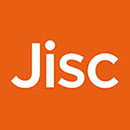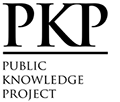Pornografía no consentida: alternativas en el ordenamiento jurídico de la propiedad intelectual de Estados Unidos
Resumen
La pornografía no consentida es un acto de violencia en la que atentan contra la dignidad, reputación y honor de las personas. En esta investigación se presentan algunas de las alternativas jurídicas existentes para enfrentar estos actos de violencia con el derecho de la propiedad intelectual, específicamente con el derecho de autor. Esta investigación se basa en el ordenamiento jurídico de Estados Unidos de Norteamérica, en la que se analizó la Ley de Derecho de Autor de 1976, la Ley de No Robo Electrónico de 1997, La Ley de Decencia de las Comunicaciones de 1996, La ley de Privacidad Electrónica en las Comunicaciones de 1986, la ley de Derechos de Autor en el Milenio Digital de 1998 y las excepciones y aclaraciones que presenta la jurisprudencia. La investigación concluye que hay alternativas disponibles para las víctimas de estos actos de pornografía no consentida. Sin embargo, para hacer más accesible a las víctimas los remedios del derecho de autor norteamericano, se recomienda enmendar algunas de las leyes vigentes analizadas.
Descargas
Citas
Acevedo-Castillo, N., Laso-Samsing, C. y Norambuena-Avilés, R. (2020). Violencia sexual y acoso en la web: evidenciando la falta de tutela judicial efectiva. Entorno, (69), 81-89.
Ambale, M. (2008). Fair Housing Council of San Fernando Valley v. Roomates. com, LLC 521 F. 3d 1157 (9th Cir. 2008).
Brown, S. (1998). The No Electronic Theft Act: Stop Internet Piracy! DePaul Journal of Art, Technology & Intellectual Property Law, 9(1), 147-164. https://via.library.depaul.edu/jatip/vol9/iss1/6.
Burris, A. (2014). Hell hath no fury like a woman porned: Revenge porn and the need for a federal nonconsensual pornography statute. Florida Law Review, 66, 2325-2399.
Caitlin, D. (8 de septiembre de 2014). How copyright became the best defense against revenge porn. The Washington Post. http://www.washingtonpost.com/news/the-intersect/wp/2014/09/08/how-copyright-became-the-best-defense-against-revenge-porn/.
Cecil, A. L. (2014). Taking back the Internet: Imposing civil liability on interactive computer services in an attempt to provide an adequate remedy to victims of nonconsensual pornography. Washington and Lee Law Review, 71(4), 2513-2556.
Choi, B. H. (2005). The Grokster Dead-End. Harvard Journal of Law and Technology, 19, 393-412.
Citron, D. K. y Franks, M. A. (2014). Criminalizing revenge porn. Wake Forest Law Review, 49, 345-391.
De Brea, P. V. (2015). La regulación de la pornografía no consentida en Argentina. Centro de Estudios de Libertad de Expresión y Acceso a la Información (CELE). Universidad de Palermo. Disponible en: https://www.palermo.edu/cele/pdf/Paper-regulacion-pornografia.pdf.
De Oliveira, L. C. O. y Taroco, L. S. Z. (2020). Pornografía de venganza, tecnologías y nuevos espacios para la violación. Derecho y Cambio Social, (61), 454-474.
Donner, I. (1992). The Copyright Clause of the US Constitution: Why Did the Framers Include It with Unanimous Approval? The American Journal of Legal History, 36(3), 361-378.
End Violence Against Women. (2013). New Technology: Same Old Problems. https://www.endviolenceagainstwomen.org.uk/wp-content/uploads/Report_New_Technology_Same_Old_Problems.pdf.
Expósito, F. y Moya, M. (2011). Violencia de género. Mente y cerebro, 48(1), 20-25.
Fenning, K. (1929). The Origin of the Patent and Copyright Clause of the Constitution. Journal of the Patent Office Society, 11, 438.
Franks, M. A. (2015). Drafting an effective’revenge porn’law: A guide for legislators. http://dx.doi.org/10.2139/ssrn.2468823.
Franks, M. A. (2017). Revenge Porn Reform: A View from the Front Lines. Florida Law Review, 69, 1251-1337.
Goldman, E. (2003). A road to no warez: The No Electronic Theft Act and criminal copyright infringement. Oregon Law Review, 82, 369.
Goldstein, J. (29 de octubre de 2020). ‘Revenge porn’ was already commonplace. The pandemic has made things even worse. The Washington Post. https://www.washingtonpost.com/lifestyle/style/revenge-porn-nonconsensual-porn/2020/10/28/603b88f4-dbf1-11ea-b205-ff838e15a9a6_story.html.
Hadwin, J. (2017). Victim blaming and third-person effect: A comparative analysis of attitudes for revenge porn and sexual assault (Tesis de Maestría). Oklahoma State University. https://hdl.handle.net/11244/54533.
Huber, A. (2020). Women, image based sexual abuse and the pursuit of justice (Disertación doctoral). Liverpool: John Moores University.
Jie, W. A. N. G. (2011). Philosophical Analysis of “Safe Harbor” Provision. Journal of Foshan University (Social Science Edition), (1), 3.
Kopf, S. (2013). Avenging revenge porn. Mod. Am., 9, 22.
LaMotte, S. (9 de septiembre de 2020). Así recopilan información de tus hijos pequeños a través de las apps. CNN. https://cnnespanol.cnn.com/2020/09/08/asi-recopilan-informacion-de-tus-hijos-pequenos-a-traves-de-las-apps/.
Lee, A. J. (2005). MGM Studios, Inc. v. Grokster, Ltd. y In re Aimster Litigation: A Study of Secondary Copyright Liability in the Peer-to-Peer Context. Berkeley Technology Law Journal, 20(2), 485-508.
Levendowski, A. (2013). Using copyright to combat revenge porn. Journal of intellectual property and entertainment law, 3, 422.
Lichter, S. (2013). Unwanted exposure: civil and criminal liability for revenge porn hosts and posters. Harvard Journal of Law & Technology.
Luño, A. E. P. (1998). Internet y el Derecho. Informática y derecho: Revista iberoamericana de derecho informático, (19), 721-734.
Maddocks, S. (2018). From non-consensual pornography to image-based sexual abuse: Charting the course of a problem with many names. Australian Feminist Studies, 33(97), 345-361.
Maddocks, S. (2020). ‘A Deepfake Porn Plot Intended to Silence Me’: exploring continuities between pornographic and ‘political’deep fakes. Porn Studies, 1-9.
Matsui, S. (2015). The criminalization of revenge porn in Japan. Washington International Law Journa, 24, 289.
McGlynn, C. y Rackley, E. (2017). More than ‘Revenge Porn’: image-based sexual abuse and the reform of Irish law. Irish Probation Journal, (14), 38-51.
McGlynn, C., Johnson, K., Rackley, E., Henry, N., Gavey, N., Flynn, A. y Powell, A. (2020). ‘It’s Torture for the Soul’: The Harms of Image-Based Sexual Abuse. Social & Legal Studies. https://doi.org/10.1177/0964663920947791.
Miles, E. (2004). In re Aimster & (and) MGM, Inc. v. Grokster, Ltd.: Peer-to-Peer and the Sony Doctrine. Berkeley Technology Law Journal, 19, 21.
Montero, E. (2000). La responsabilité des prestataires intermédiaires de l’Internet. Revue Ubiquité (5), 99-117.
Montero, E. (2001). La responsabilité des prestataires intermédiaires sur les résaux. Cahiers du Centre de Recherches Informatique et Droit (monográfico: Le commerce électronique européen sur les rails? Analyse et propositions de mise en œuvre de la directive sur le commerce électronique), (19), 273-295.
Morris, M. A. (2017). Empathy Induction to Reduce Victim Blaming in Revenge Porn Cases.
Musoni, M. (2019). The criminalization of “Revenge Porn” in South Africa. Obiter, 40(1), 61-74.
Oltermann, P. (2014). Revenge porn’ victims receive boost from German court ruling. Koblenz court orders man to delete nude images of ex-partner, even though he had shown no intention of publishing them. The Guardian. http://www.theguardian.com/technology/2014/may/22/revenge-porn-victims-boost-german-court-ruling.
Oswald, L. J. (2006). The intent element of inducement to infringe under patent law: Reflections on Grokster. Michigan Telecommunications and Technology Law Review, 13, 225.
Pedro, J. (1996). Desregulación y competencia en la Ley de Telecomunicaciones norteamericana de 1996. Revista de administración pública, (141), 337-376.
Plaza, J. (23 y 24 de abril de 2001). La responsabilidad civil en Internet: su regulación en el Derecho comunitario y su previsible incorporación al Derecho español. La Ley, (5293 y 5294).
Puente, S. N., Romero, D. F. y Cupeiro, S. V. (2015). El impacto de Internet como herramienta de lucha contra la violencia de género. Análisis de la brecha digital y de los procesos de victimización. Revista europea de derechos fundamentales, (26), 65-77.
Rico, M. N. (1996). Violencia de género: Un problema de derechos humanos. CEPAL. https://repositorio.cepal.org//handle/11362/5855.
Rood, M. L. y Schriner, J. (2020). The Internet Never Forgets: Image-Based Sexual Abuse and the Workplace. En Handbook of Research on Cyberbullying and Online Harassment in the Workplace (pp. 107-128). IGI Global.
Salazar. P. G. (1999). La Protección Legal del Autor puertorriqueño (2a ed.). Universidad De Puerto Rico.
Samuelson, P. (2006). Three Reactions to MGM v. Grokster. Michigan Telecommunications and Technology Law Review, 13, 177.
Schechter, R. E. y Thomas, J. R. (2003). Intellectual Property: The Law of Copyrights. Patents and Trademarks, 16(3).
Stroud, S. R. (2014). The dark side of the online self: A pragmatist critique of the growing plague of revenge porn. Journal of Mass Media Ethics, 29(3), 168-183.
Stroud, S. (24 de agosto de 2016). What Exactly is Revenge Porn or Nonconsensual Pornography? (Excerpt from “Social Media, Online Sharing, and the Ethical Complexity of Consent in Revenge Porn”). En Close Scheinbaum, A. (Ed.), Online Consumer Behavior: The Dark Side of Social Media. Routledge, Forthcoming. https://ssrn.com/abstract=2828740.
Tomeo, F. (2010). ¿Deben responder las redes sociales por contenidos publicados por terceros? En La Comunicación Social, en estado crítico. Entre el mercado y la comunicación para la libertad: actas del II Congreso Internacional Latina de Comunicación Social. Tenerife: Sociedad Latina de Comunicación Social.
Uhl, C. A., Rhyner, K. J., Terrance, C. A. y Lugo, N. R. (2018). An examination of nonconsensual pornography websites. Feminism & Psychology, 28(1), 50-68.
Vaina, L. (27 de junio de 2019). ¿Qué significan las siglas LGBTIQ+? La Vanguardia. https://www.lavanguardia.com/vida/junior-report/20190627/463124839887/lgbtiq-definiciones.html.
Valenti J. (1 de septiembre de 2014). What’s Wrong With Checking Out Stolen Nude Photos of Celebrities The ethics of looking away. http://www.theatlantic.com/entertainment/archive/2014/09/leaked-photos-nude-celebrities-abuse/379434/.
Vega-Lozada, F. (2014). La Venganza Pornográfica (Revenge Porn) y la violencia de género perspectivas del ordenamiento jurídico norteamericano y puertorriqueño (pp. 53 -72). http://fiadi.org/wp-content/uploads/2015/04/XVIII-Fiadi-CR-Lunes.pdf.
Walz, C. N. y Rogers, R. L. (III). (2013). Sixth Circuit’s Decision in Jones v. Dirty World Entertainment Recordings LLC Repairs Damage to Communications Decency Act. Communications Lawyer, 30, 4.
Wang, J. (2018). Self-regulation of Copyright Enforcement on Hosting Platforms. En Regulating Hosting ISPs’ Responsibilities for Copyright Infringement (pp. 199-227). Singapur: Springer.
Yen Alfred, C. (2006). Third-Party Copyright Liability After Grokster. Minnesota Law Review, 91, 184.
Yen, A. (2000). Internet Service Provider liability for subscriber copyright infringement, enterprise liability, and the First Amendment. The Georgetown Law Journal, 88, 1833-1893.
Derechos de autor 2020 Fredrick Vega-Lozada

Esta obra está bajo licencia internacional Creative Commons Reconocimiento-NoComercial-SinObrasDerivadas 4.0.
Esta licencia permite copiar, distribuir, exhibir y representar la obra siempre y cuando se reconozca la autoría y se cite la obra de la forma adecuada. No se permite el uso comercial de la obra original ni la generación de obras derivadas.
Los autores garantizan a la Revista Iberoamericana de la Propiedad Intelectual el derecho de ser la primera publicación del trabajo.












































